An Easy Guide to Buying the Right UPS for your NAS System
The appeal of a UPS has grown substantially in recent years, not just for business users either, with an increasing number of home users in limited power setups (houseboats, pop-up offices and mobile homes) the utility of a safety net for your power consuming devices is inarguable. More conventionally, if your data is mission-critical and your business or home life revolves around both access to your data, as well as maintaining the constant read and write of daily life, then like many people you may have looked into the option of an uninterruptible power suppler (or UPS for short). There was a time when a power failure solution was an option only open to enterprise and elite-level business – with prices starting off in 5 figures. However in recent years with the boom of network-attached storage (NAS) in the home, as well as mass production technique becoming a smoother and more economical process, Owning a UPS device to protect your data in the home or business has become a far more affordable option. However choosing the right UPS for your QNAP or Synology NAS, as well as finding one that compliments your budget can be hard. Today we want to address the three commonly asked questions by users who are considering a UPS, but do not quite know which UPS device is right for them. They are:
- How does a UPS work and how will I benefit?
- How do I work out the right Watts, Volts and Amps to choose the best UPS?
- How much is a UPS going to cost me?
So, today I want to go through each of those frequently asked questions and help you understand what a UPS actually is, much much they are, how to narrow down the choices and finally show you will be able to use it. This guide is useful for NAS buyers who are looking at Synology, QNAP, Asustor, Terramaster and more, but it also applies to just helping you choose the right UPS for your other devices too. Let’s go!
What is a UPS and Why Should I Buy One for my NAS?
This is easily the most commonly asked question about UPS. UPS stands for Uninterruptible Power Supply and many users seem to think that a buying a UPS will mean they can run their devices, drawing power from the UPS meaning that they can read and write data to their NAS server, large scale DAS or from their large SAN for hours after their mains power fails. Yes, this is true – but you WILL have to pay 5 figure sums to get that kind of stability and prolonged support. In most cases, you will not need HOURS to be protected from Read/Write failure on your HDD media. No, in many NAS and DAS devices, what you want is enough time to shutdown the Server/RAID storage down safely. This is something you can have at your figure tips just buy spending hundreds of pounds, NOT thousands, Obviously, this is heavily dependant on the number of devices drawing power, their individual needs and the efficiency and functionality of the UPS in question. If you would prefer to watch a video of what exactly a UPS is and how to choose one, click the video below. Otherwise, read on!
How Does a UPS Draw Power and How Do I Connect My Devices?
This is a complex subject for some and we want to talk about how this all works. I will keep it slow and easy! Before we get all confused with Watts, Volts, Power and more, let’s use an analogy we can all wrap our head around. Let’s first off think of the receiving of electricity to your device as drawing water from a tap.
For a tap, you need water AND the pressure to deliver it through the pipe out of the tap
Water in this analogy represents ELECTRONS, that carry the electricity from the source power supply all the way round to the destination device
The Tap in this analogy represents the Destination device – a NAS, DAS or PC (and of course the water/electrons are going around in a circuit back to the water/power source, which is mostly unseen In the cables)
The Pressure in this analogy represents the VOLTAGE and this measurement represents the strength of the electricity is being pushed by the electrons in our circuit
It’s important to measure this as some devices are designed only to accept number of VOLTS and if this is too high or two low it will not function correctly. To go back to our analogy, it will either be too weak for water to travel up and out the tap, or will be too strong and blow to tap out of the sink!
AMPS represent the amount of electrical charge passes a given point in a second. i.e. How much water passes through the pipe per second.
So, now we need to know the WATTS of the device. This is compiled with the following equation:
AMPS x VOLTS = WATTS
or
Water Volume x Water Pressure = Water Power
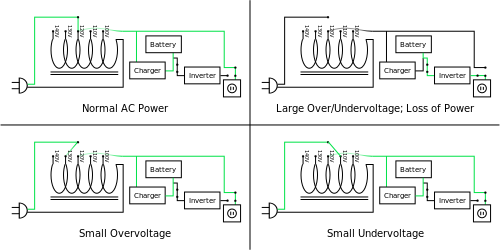 If you have ever lived in a Flat or Apartment on the 5th floor and the shower basically dribbled the water out, this was due to the water pressure not being strong enough to deliver the water to the destination device. A smaller battery pack is often displayed in MILLIAMP HOURS (do not think of this as a measurement of time but of a measurement of CHARGE. In this analogy, this would represent a large drum of water. – Not how much water there is or how fast it is travelling from the drum but the available water being carried over to the tap. This the output and result is heavily affected by the AMPS and VOLTS (or pressure of water and how much water the tap can maximum or minimum receive).
If you have ever lived in a Flat or Apartment on the 5th floor and the shower basically dribbled the water out, this was due to the water pressure not being strong enough to deliver the water to the destination device. A smaller battery pack is often displayed in MILLIAMP HOURS (do not think of this as a measurement of time but of a measurement of CHARGE. In this analogy, this would represent a large drum of water. – Not how much water there is or how fast it is travelling from the drum but the available water being carried over to the tap. This the output and result is heavily affected by the AMPS and VOLTS (or pressure of water and how much water the tap can maximum or minimum receive).
Choosing the right UPS Battery for your Home or Office
Almost all UPS devices are connected the same. You connect one end to your mains power plug (3 Pin, 2 Pin worldwide etc) and the UPS should feature a multitude of similar plugs on board to connect your destination device to (PC, NAS, etc). Inside the UPS Chassis is one or more Batteries that are being charged from the wall plug, but your host devices are being powered from the wall (not drawing from the batteries unless disaster strikes). If a power failure in your home or business occurs, the destination devices will draw from the Batteries giving you time to power save, power down, migrate your data elsewhere and ultimately protect your digital storage from corruption or loss for power failure. Additionally, even though there are a large number of figures present when buying a UPS, it should be remembered that The power drawn by computing equipment is expressed in Watts or Volt-Amps(VA).
BUT
The power in Watts is the real power drawn by the equipment.Volt-Amps are called the “apparent power” and are the product of the voltage applied to the equipment times the current drawn by the equipment.
Smaller, cheaper UPS devices do not provide much in the way of charge and therefore the running time is going to be shorter. Mid range UPS devices can provide higher CHARGE TIMES, more features and functionality like Network alerts, internet alerts over SMS, E-mail, LCD display, USB connectivity (for maintenance as well as be able to save or shut down some NAS or PC machines for you in the event of power failure – saving you from needed to interact) and more.
There is more to choosing the right UPS than matching the WATTS of your destination device and that of the UPS
UPS capacities are giving in VOLT-AMPS , not WATTS
Remember again,
VAULTS x AMPS = WATTS
Well, Resistance present in electrical load means that the WATTS cannot be matched Like for Like. So:
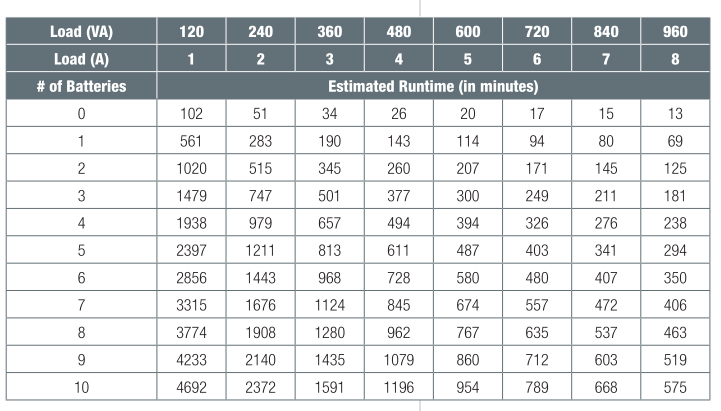 How do I Choose the Correct VA for the Watts on my NAS, PC and more?
How do I Choose the Correct VA for the Watts on my NAS, PC and more?
You will need to consider a UPS with a VOLT-AMP 50-75% higher than the WATTS present on your destination device. Don’t forget to factor into your consumption any other devices that are drawing from the UPS, as this consumption is not per device, but TOTAL.
What is Line Interaction on a UPS?
Some UPS are ‘Line Interactive’ . This is a functionality that can support you if you local supply is weak or intermittent and can bolster that connection. Particularly useful for those that are based far from city centres where the maintenance may be less frequent.
Equipment nameplate ratings are often in VA, which makes it difficult to know the Watt ratings. If using equipment nameplate ratings for sizing, a user might configure a system, which appears to be correctly sized based on VA ratings but actually exceeds the UPS Watt rating. By sizing the VA rating of a load to be no greater than 60% of the VA rating of the UPS, it is impossible to exceed the Watt rating of the UPS. Therefore, unless you have high certainty of the Watt ratings of the loads, the safest approach is to keep the sum of the load nameplate ratings below 60% of the UPS VA rating. Note that this conservative sizing approach will typically give rise to an oversized UPS and a larger run time than expected. If optimization of the system and an accurate run time are required, call our experts who have the ability to accurately size your UPS
– Battery Packs, Listed in VOLTS and can be added to an existing UPS
– Replacement Battery Cartridges, an Internal Upgrade, RANGE specific
– Available in Desktop or Rack mount
How Does Synology, QNAP, Asustor and Terramaster work with a UPS?
Almost all NAS drive brands support the use of a smart UPS, connected via USB for monitoring or via the network. That said, how each NAS system reacts to a power cut and switching to the UPS battery does differ. I recently tested the CyberPower 1500 system with a selection of 4-Bay UPS systems to see how each NAS brand’s hardware and software react. Below is the video for each brand. Just click the video, or you can open them up in a separate tab by clicking the title.
| Synology NAS UPS Test
|
QNAP NAS UPS Test
|
| Asustor NAS UPS Test
|
Terramaster NAS UPS Test |
Which UPS do you recommend for my NAS Server?
Below are a number of tiered UPS systems for your individual power needs and budget. These are based on the Watts you need to cover and based on a single NAS of different size each. This, of course, is just the tip of the iceberg and for more precise advice based on a whole office or server room of hardware, we recommend getting in touch with us directly using the Free Advice section below (no commitment and the advice is totally impartial) so we can save you money as well as provide you with a solution that will help you sleep at night!
📧 SUBSCRIBE TO OUR NEWSLETTER 🔔
🔒 Join Inner Circle
Get an alert every time something gets added to this specific article!
This description contains links to Amazon. These links will take you to some of the products mentioned in today's content. As an Amazon Associate, I earn from qualifying purchases. Visit the NASCompares Deal Finder to find the best place to buy this device in your region, based on Service, Support and Reputation - Just Search for your NAS Drive in the Box Below
Need Advice on Data Storage from an Expert?
Finally, for free advice about your setup, just leave a message in the comments below here at NASCompares.com and we will get back to you. Need Help?
Where possible (and where appropriate) please provide as much information about your requirements, as then I can arrange the best answer and solution to your needs. Do not worry about your e-mail address being required, it will NOT be used in a mailing list and will NOT be used in any way other than to respond to your enquiry.
Need Help?
Where possible (and where appropriate) please provide as much information about your requirements, as then I can arrange the best answer and solution to your needs. Do not worry about your e-mail address being required, it will NOT be used in a mailing list and will NOT be used in any way other than to respond to your enquiry.

|
 |
The BEST NAS of 2026.... ALREADY??? (UnifyDrive UP6)
How Much RAM Do You Need in Your NAS?
A Buyer's Guide to Travel Routers - GET IT RIGHT, FIRST TIME
Jonsbo N6 DIY NAS Case Review
The Best Bits (and Worst Bits) of NAS of 2025!
Minisforum MS-02 Ultra Review
Access content via Patreon or KO-FI





Discover more from NAS Compares
Subscribe to get the latest posts sent to your email.


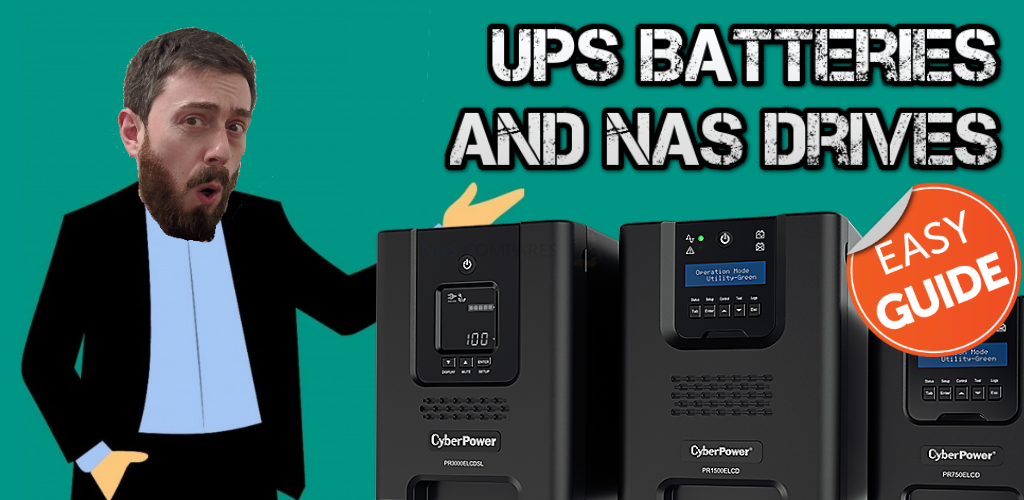
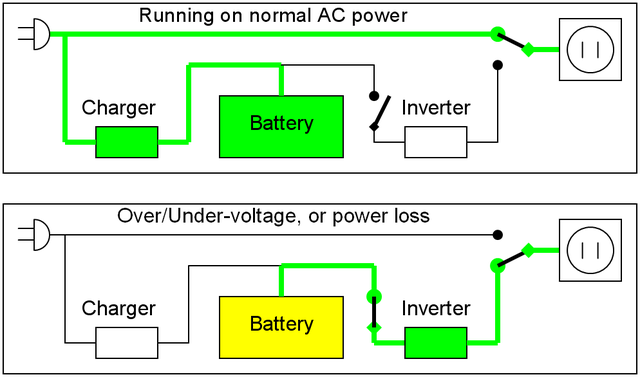



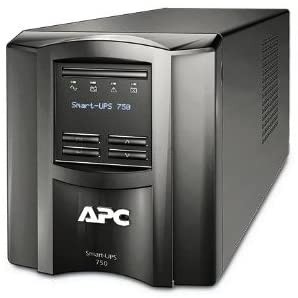
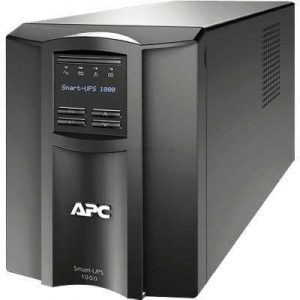
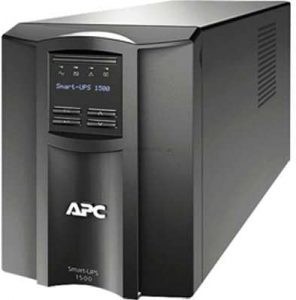
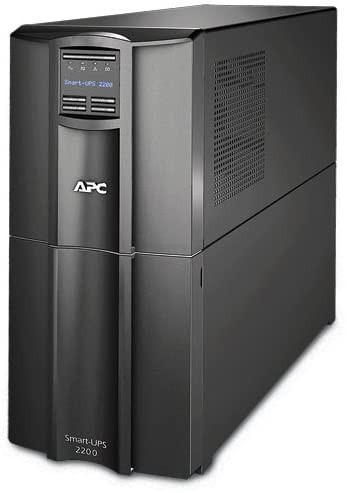
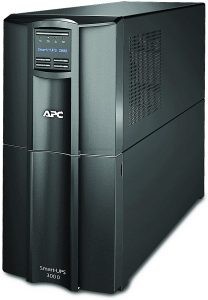




how to set when UPS is back to normal using AC power the NAS can turn on by itself ?
REPLY ON YOUTUBE
my NAS run into Safe Mode but it does not automatically shutdown until the battery is Off. How to get auto shutdown after the Safe Mode?
REPLY ON YOUTUBE
Can you test a scenario where you are copying a huge file but the battery runs out before the file finishes copying?
REPLY ON YOUTUBE
great video, I got myself Asustor + Cyberpower UPS.. in 2025!
REPLY ON YOUTUBE
Excellent
REPLY ON YOUTUBE
have you done a video on Setting up Network UPS for Synology, I have a Synology and want to have it shut my PC as well if needed.
REPLY ON YOUTUBE
Thanks!
Hey buddy, Just wanted to say a massive thanks for all your videos. It rally helped me to make better decision – went for TS-473e, by the way 😉
Thank you again !
REPLY ON YOUTUBE
Great video but does this work on a Synology Disk Station DS1522+ – 5 Bay NAS & what UPS would be best for this NAS
REPLY ON YOUTUBE
One thing you didn’t cover in this test is what happens if the power doesn’t come back in in under 10 minutes? I know you demonstrated that the NAS unmounted the drives and kicked people off but did it power down at any point? It was hard to tell from this test if it completely powered off. Because when we lose our power it is usually out for hours some times over a day.
I know the first choice you showed about powering down after 5 minutes would but I’m curious about the option you used.
REPLY ON YOUTUBE
If I have an Asustor Nimbustor 2 Bay, how long would it last for a 650va ups
REPLY ON YOUTUBE
I happened to see there are different views from different websites saying about the importance of having pure sinewave vs ok to have simulated sine wave or stepped sinewave for a NAS, do you mind to share your thoughts?
Pure Sine Wave UPS: Some argue that a pure sine wave UPS is essential for NAS devices. A pure sine wave output replicates the smooth waveform of utility power, providing a clean and stable electrical signal. This is particularly important for sensitive electronic equipment like NAS devices, as it helps ensure compatibility and optimal performance. The pure sine wave output is recommended for NAS models that have active power factor correction (PFC) or rely on high-quality power sources.
Simulated Sine Wave or Stepped Sine Wave UPS: On the other hand, there are opinions that suggest a simulated sine wave or stepped sine wave UPS can be sufficient for NAS devices. These UPS models are often more affordable and can adequately protect the NAS from power outages and voltage fluctuations. They approximate a sine wave but may introduce some degree of distortion or harmonic content. While they may not be ideal for all types of equipment, many NAS devices can function well with these types of UPS.
Ultimately, the choice depends on various factors, including the specific NAS model, its power requirements, and the level of protection you desire. If your NAS manufacturer recommends or requires a pure sine wave UPS, it’s best to follow their guidelines to ensure compatibility and avoid potential issues. However, if your NAS model doesn’t explicitly require a pure sine wave UPS, a simulated sine wave or stepped sine wave UPS can be a viable and cost-effective solution for providing backup power and protecting your NAS from power disruptions.
It’s also worth considering the quality of the power supply in your area. If you experience frequent power fluctuations or have unreliable utility power, investing in a UPS with a pure sine wave output may provide added peace of mind and better protection for your NAS.
Your channel is the worst NAS channel on youtube way too much rambling get to the point
REPLY ON YOUTUBE
If I use the USB port on my 720+ for a portable drive can I use a USB hub to connect the drive and UPS??
REPLY ON YOUTUBE
This was very helpful to me. I did not knew I could do this. I plugged in the USB cable my 251 to my Eaton UPS and it just worked like you showed us. Thank you and nice socks by the way!
REPLY ON YOUTUBE
What would happen to an expansion unit that’s attached to the synology? Would it go in to safe mode along with the main unit when power dropped, or do you have to configure it separately?
REPLY ON YOUTUBE
Thank you for this video! I also bought a QNAP TS-251D, and i’m looking to buy a CyberPower CP1500AVRLCD, which I feel is kind of a must/insurance for a NAS, right?
My power tends to blink, or go out for 2-8 hours, randomly every other month. Old trees falling, new homes being built, and maintenance or wires being hit…
Would a full shut down be best? Or think that I could get away with just standby?
Basically, which is healthier for the NAS? I only plan to have the NAS connected.
I only use the NAS for media backup, and eventually playing backed up DVD’s. Only two 8Tb drives in raid 1.
But if power is out, I don’t need the NAS to be on…
REPLY ON YOUTUBE
Can you use the UPS monitoring via Ethernet? I have 3 NAS and want them all to shut down in a power issue.
REPLY ON YOUTUBE
Your not meant to yank the plug like that as you removed the ground, just flip the power switch is safer for testing.
REPLY ON YOUTUBE
Great video thank you. I have my NAS’ electrical already connected to a UPS, but not the USB. Should I power NAS down to connect USB, or does that not matter?
REPLY ON YOUTUBE
Thank you CyberPower for making this video possible and to NASCompairs for being awesome as usual. I now understand how important having a UPS attached to my NAS is and waisted no time in getting one and getting it configured. Thank you
REPLY ON YOUTUBE
I have DS220+ that is not shutting down with a CyberPower CP825AVRLCD but seems to enter safe mode only. Does that mean it’s not compatible?
REPLY ON YOUTUBE
Thank you! I think I’m going to get this cyber power ups. How’s it holding up?
REPLY ON YOUTUBE
Can you please do a comparison of all the different UPS meant for Synology NAS? I’ve been told that I need to get a UPS as well after getting a NAS
REPLY ON YOUTUBE
So what happens if your power is out for extended period of time in that standby mode you selected and battery runs out. Is the data safe on reboot? When the power comes back on will it still reboot itself or will you need a manual reboot?
REPLY ON YOUTUBE
Does cyberpower bu800e can have enough support ds920+?
REPLY ON YOUTUBE
Thanks for this video and some of the others connecting different brands of NAS to a CyberPower UPS. Very practical information!
REPLY ON YOUTUBE